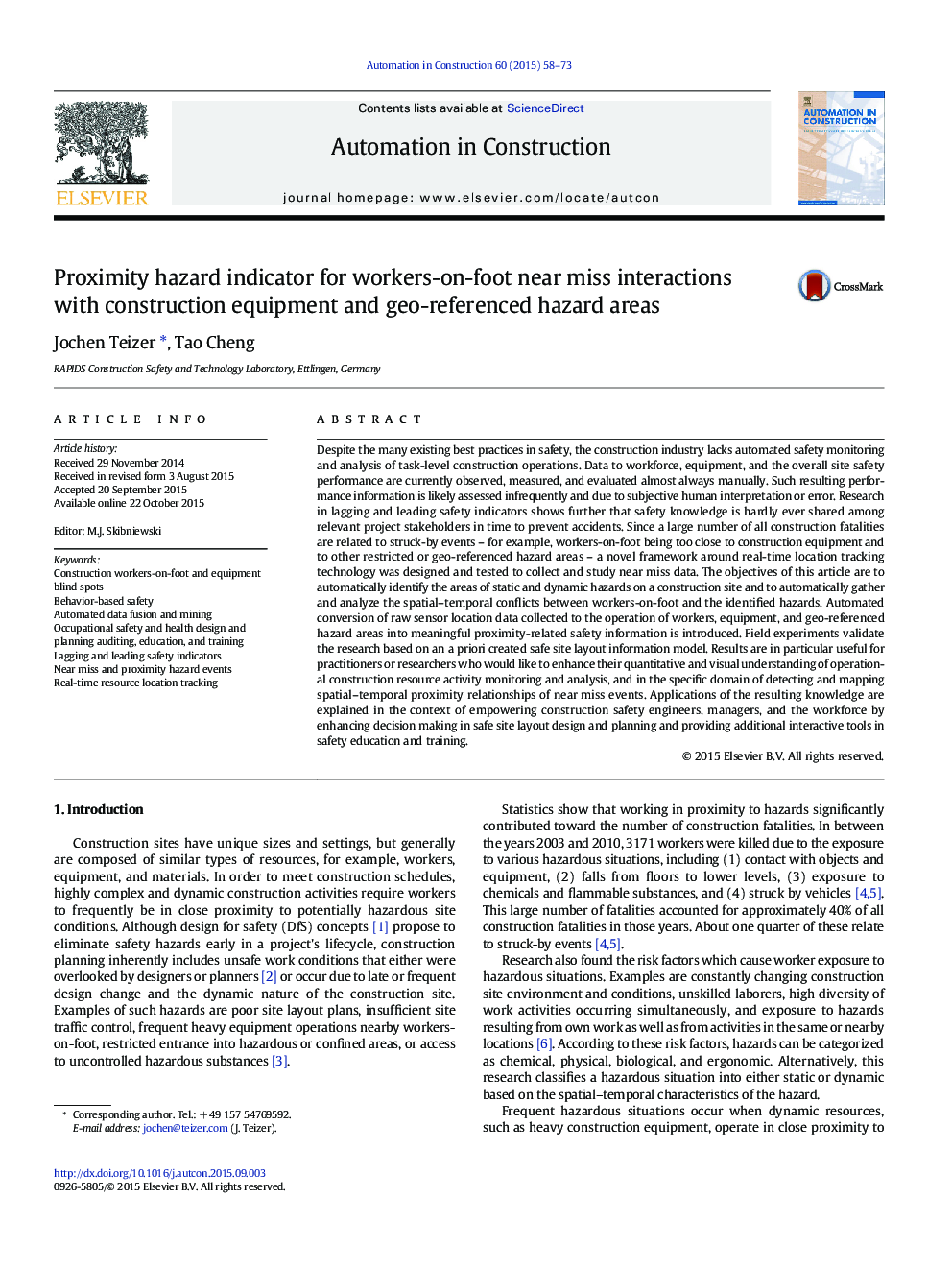| Article ID | Journal | Published Year | Pages | File Type |
|---|---|---|---|---|
| 246282 | Automation in Construction | 2015 | 16 Pages |
•Near misses, e.g. too close proximity of workers-on-foot to equipment, are frequent.•Data to lagging and leading safety indicators need to be collected automatically.•Technology aids in recording and detecting time-stamped location of near misses.•Proximity hazard indicator (PHI) creates objective safety performance evaluation.•Workers favor the approach; advanced safety education and training become available.
Despite the many existing best practices in safety, the construction industry lacks automated safety monitoring and analysis of task-level construction operations. Data to workforce, equipment, and the overall site safety performance are currently observed, measured, and evaluated almost always manually. Such resulting performance information is likely assessed infrequently and due to subjective human interpretation or error. Research in lagging and leading safety indicators shows further that safety knowledge is hardly ever shared among relevant project stakeholders in time to prevent accidents. Since a large number of all construction fatalities are related to struck-by events – for example, workers-on-foot being too close to construction equipment and to other restricted or geo-referenced hazard areas – a novel framework around real-time location tracking technology was designed and tested to collect and study near miss data. The objectives of this article are to automatically identify the areas of static and dynamic hazards on a construction site and to automatically gather and analyze the spatial–temporal conflicts between workers-on-foot and the identified hazards. Automated conversion of raw sensor location data collected to the operation of workers, equipment, and geo-referenced hazard areas into meaningful proximity-related safety information is introduced. Field experiments validate the research based on an a priori created safe site layout information model. Results are in particular useful for practitioners or researchers who would like to enhance their quantitative and visual understanding of operational construction resource activity monitoring and analysis, and in the specific domain of detecting and mapping spatial–temporal proximity relationships of near miss events. Applications of the resulting knowledge are explained in the context of empowering construction safety engineers, managers, and the workforce by enhancing decision making in safe site layout design and planning and providing additional interactive tools in safety education and training.
Graphical abstractFigure optionsDownload full-size imageDownload as PowerPoint slide
